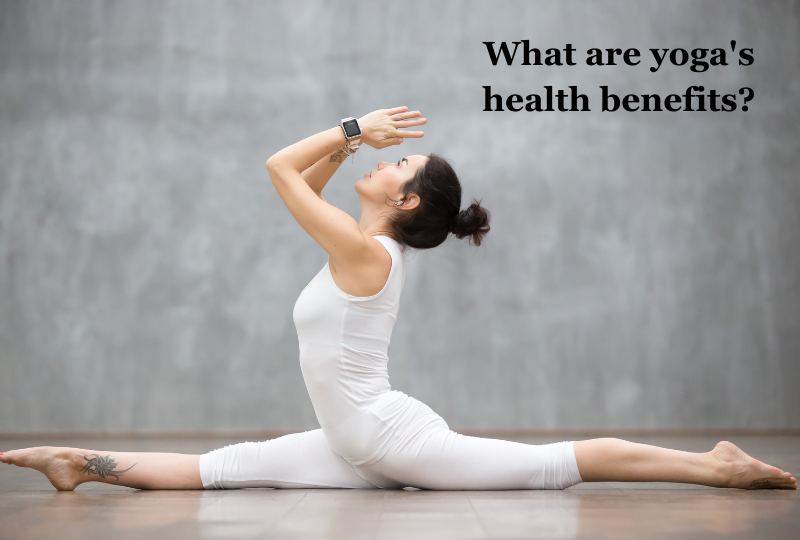Physical Address
304 North Cardinal St.
Dorchester Center, MA 02124
Physical Address
304 North Cardinal St.
Dorchester Center, MA 02124

There isn’t many wellness fads that create as much buzz as yoga.
Based on the data, there was a more than 50% growth in the number of yoga practitioners in the United States between 2012 and 2016. According to the poll, one in three Americans indicated they are more likely or more likely to practice it in the next 12 months. People who practice yoga are also more likely to be involved in other forms of exercise, such as jogging or cycling.
People do not have any justification for continuing this ancient custom. Experts surmise that this may be related to yoga’s dual benefits of mental and physical health.
It is a sophisticated, age-old discipline with roots in Indian philosophy. Originally a spiritual practice, it has gained popularity as a means of enhancing both mental and physical health.
American yoga practice often stresses postures (asanas), breathing exercises (pranayama), and meditation (diana), however classical yoga also includes other components.
What does it indicate when you have dreams about getting pregnant?
It comes in a wide variety of forms, with poses ranging from easy to strenuous. Variations in the forms of yoga included in the research could impact the findings. This makes assessing studies on yoga’s health benefits challenging.
Some refer to it and two Chinese forms of exercise, Tai Chi Chuan and Qigong, as “meditative movement practices.” There are physical and contemplative components to all three activities.
The term “yoga” was originally used in the ancient writings known as the Rig Veda. The word yoga is derived from the Sanskrit word “yuj,” which implies “union” or “to unite.”
Northern India is where it is first appeared almost 5,000 years ago.
In the late 1890s, Indian monks brought yoga knowledge to the West. In the 1970s, modern yoga classes gained a lot of popularity in Western nations.
The integration of the body, mind, and spirit is the overarching goal of yoga.
It has six branches. Every branch stands for a distinct methodology and feature set.
The following are the six branches:
Hatha yoga: It is a physical and mental discipline that works to fortify the mind and body.
Raja Yoga: This lineage includes rigorous commitment to a set of disciplined phases called the Eight phases of Yoga, as well as meditation.
Karma Yoga: It is a path of service with the goal of eradicating negativity and selfishness from the future.
Bhakti yoga: It seeks to create a path of dedication, a constructive outlet for emotions, and an environment of tolerance and acceptance.
Jnana Yoga: This school of yoga focuses on wisdom, the scientific method, and the growth of the mind by study.
Tantra Yoga: This is the route of ceremony, ritual, or breaking up with someone.
How to Meal Plan: 5 Easy Steps for Quick & Easy Meal Planning
Adaptability: Indeed. It exercises improve range of motion and stretch the muscles. Regular exercise helps you become more flexible.
Strength: Yes, Maintaining equilibrium within the body requires a great deal of strength. The arms, back, legs, and torso muscles become stronger with regular exercise.
Athletics: None. It doesn’t include rivalry. Avoid comparing yourself to other students in the class and instead concentrate on your practice.
Low impact: Yes, It works your entire body, but it doesn’t affect your joints in any way.

Research indicates that yoga
MP3 Juice also fast and free at no cost, find your favorite music and videos in MP3 juices
If the practice is led by a qualified instructor, many forms of it are reasonably mild and safe for people.
Despite the fact that the research is still in its early stages (particularly when compared to the age of yoga practice), the positive findings support what yoga practitioners have been saying for thousands of years: It is helpful for our general health.
It exercises cover a wide range of activities, and the majority of them concentrate on meditative techniques rather than physical action. It can include even karmic or charitable deeds!
It focuses on both physical exercise and daily workouts, so it’s not just about physical activity. Choose the approach that suits you the most, and never forget that starting a yoga practice is an investment in your future.
Is it suitable for those who are new?
It is suitable for beginners, yes. For those just getting into yoga, there are a ton of online materials and courses available. Starting with beginner-friendly poses is crucial, and as your flexibility and skills advance, you should gradually go to more difficult postures.
What tools do I need to practice yoga?
It can be practiced with very little gear. Yoga mats are helpful for cushioning and grasping, along with loose-fitting clothes that allow for easy movement and perhaps yoga straps or blocks to support yourself in particular postures. A yoga towel is frequently used by practitioners to absorb sweat.
When should you practice it?
Yoga class frequency is determined by your objectives and availability. While some people do it every day, others only do it sometimes. Frequency is less significant than consistency. Even a small bit of physical activity each day can have a big impact.
Can it reduce anxiety and stress?
Yes, It is well renowned for its ability to reduce stress. Stress reduction, anxiety relief, and the promotion of emotions of calm and mental clarity can all be achieved through a combination of conscious breathing, relaxation, and postures.
Is it a workout method?
Yes, It is an activity that stresses balance, strength, and flexibility. Although it doesn’t have the same cardiovascular advantages as more strenuous exercises, it complements other types of exercise and encourages general health.
Resource Health
Your articles are extremely helpful to me. Please provide more information!
[…] How does yoga practice work? […]
Your articles are extremely helpful to me. Please provide more information!